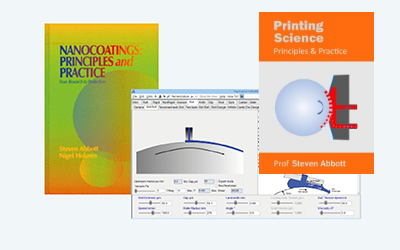Surface Areas and Volumes of Nanoparticles
Quick Start
Although the formulae are easy, it's useful to have an app which reminds us how the relative surface areas and volumes of nanoparticles change as the particles get smaller - usually leading to problems in keeping them dispersed.
The graph performs another calculation, showing how much of a nanoparticle (with a given atomic radius ratom) is at the surface - an insignificant amount till particles get very small.
Surface Area and Volume
A key issue, and often a problem, is that the ratio of Surface Area to Volume increases as nanoparticles get smaller. Because clumping depends on surface area, smaller particles are usually harder to keep dispersed. Although the calculations are trivial, it is always a good idea to have the app handy for when you want to compare two different sizes of nanoparticle. Note that the ratios between the two particle sizes are always shown as larger/smaller.
`"Surface Area" = 4πr^2`
`Volume" = 4/3πr^3`
`"Surface Area"/"Volume" = (4πr^2)/(4/3πr^3) = 3/r`
The other "surface" aspect, shown in the graph, is what % of individual atoms/units making up the nanoparticle are actually on the surface. This is only significant for super-small particles.


